Ambient light sensors are now widely used in many LCD display applications, from consumer electronics to automotive applications, which can help save battery power by automatically adjusting display brightness. In addition, these sensors work well under a variety of light sources, such as natural daylight, fluorescent and incandescent lamps. A lot of such products have been released recently, and they all share a common feature that these newly developed ambient light sensors can match the requirements of the human eye, which is very important for relieving eye strain.
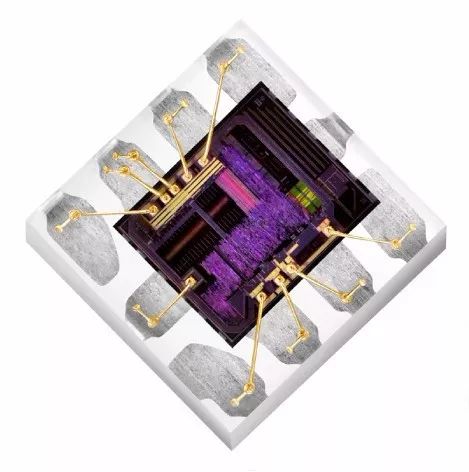
The ambient light sensor can sense the ambient light and tell the processing chip to automatically adjust the brightness of the display backlight to reduce the power consumption of the product. For example, in mobile applications such as mobile phones, laptops, and tablets, the display consumes up to 30% of the total battery power, and ambient light sensors maximize battery life. On the other hand, ambient light sensors help the display provide a soft picture. When the ambient brightness is high, the liquid crystal display using the ambient light sensor will automatically adjust to high brightness. When the external environment is dark, the display will be adjusted to low brightness. .
Principle of ambient light sensor technology
Ambient light sensing system implementation requires three major components: a light sensor that monitors ambient light intensity, a data processing device (usually a microcontroller), and an actuator that controls the backlight input current.
1 is an exemplary block diagram of a system implementing backlight control. In this combination, the light sensor is a key component because it provides ambient light intensity information to other modules of the system. The light sensor must have a signal converter (such as a photodiode or CdS photoresistor) that converts the optical signal into an electrical signal, and a signal amplification and/or regulation device and an analog-to-digital converter (ADC).

Figure 1. System block diagram for implementing backlight control
Figure 2 shows a discrete photodiode circuit. As can be seen from the figure, the circuit requires one or more operational amplifiers: one for current-to-voltage conversion, and possibly one stage of amplification to provide additional gain. It also includes branch circuits for powering to ensure a highly reliable signal chain. In applications where space is at a premium, the number of components required can lead to space constraints.

Figure 2. Discrete design of photodiode circuit
There is still a more subtle problem here. In particular, ideally, it should be ensured that the measurement of ambient light simulates the response of the human eye to light. This is usually done with the visual brightness curve provided by CIE (Figure 3). However, photodiodes are rarely able to fully simulate this response mechanism because they typically have very high infrared (IR) sensitivity. In IR conditions with high IR intensity (such as incandescent or daylight), this infrared sensitivity can cause erroneous determination of light intensity.
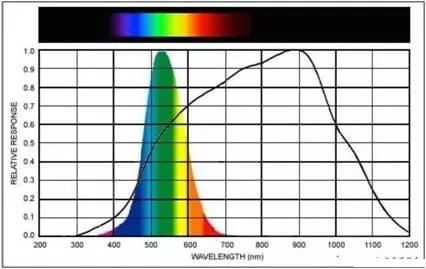
Figure 3. CIE curve and typical photodiode
One way to solve the above problem is to use two photodiodes: one that is sensitive to both visible and infrared light, and one that uses only infrared light. Finally, the former's response value is subtracted from the latter's response value to minimize infrared interference and obtain an accurate visible light response.
Electrical characteristics of ambient light sensors

1. The dark current is small, the low illumination response, the sensitivity is high, and the current changes linearly with the increase of the illumination;
2, built-in dual sensitive element, automatic attenuation of near infrared, spectral response close to the human eye function curve;
3, built-in micro-signal CMOS amplifier, high-precision voltage source and correction circuit, large output current, wide operating voltage range, good temperature stability;
4, optional optical nano material packaging, visible light transmission, ultraviolet cut-off, near-infrared relative attenuation, enhance the optical filtering effect;
5, in line with EU RoHS directive, lead-free, cadmium-free.
Considerations for choosing an ambient light sensor
There are usually several ways to detect light, for example by using phototransistors, photoresistors or photodiodes, but IC-based monolithic photodiodes are the best choice for the total light perception requirements of today's applications. one.
A photodiode is a semiconductor for detecting light and generating a current, which is constructed based on a single crystal silicon wafer, similar to a crystalline silicon wafer used to produce an integrated circuit. A typical sensor application frame diagram includes a photodiode, a current amplifier, and a passive low-pass filter to detect and process the output voltage signal caused by the optical input. Being able to integrate all of these devices and use a small package is very beneficial for the end user, and this is precisely the current market demand.
Another important aspect when choosing the right light sensor for your application is to understand which of the most important specifications is the most critical for your application, and which one you need to focus on the most.
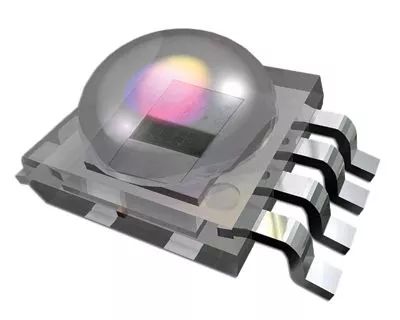
In general, when selecting a light sensor, the factors that need to be considered are as follows:
1. Spectral Response / IR Suppression: Ambient light sensors should only be sensitive to the 400 nm to 700 nm range.
2, the maximum range of Lux: direct sunlight can be as much as 130,000 Lux, but most applications require a maximum range of only 10,000 Lux.
3. Low Lux sensitivity: According to the category of the lens at the top of the light sensor, the light attenuation can be 25-50%. If low sensitivity is critical (<5 Lux), care must be taken to select a light sensor that can operate within this range.
Integrated signal conditioning (ie amplifier and ADC): Some sensors may provide a very small package, but require an external amplifier or passive component to obtain the desired output signal. The more integrated light sensor eliminates the need for external components (ADCs, amplifiers, resistors, capacitors, etc.).
4. Power consumption: For optical sensors that are subject to high Lux levels (>10,000 Lux), it is best to use a nonlinear light to analog output light sensor, or a light to digital output light sensor. This will be explained in detail later.
5, package size: For most applications, the package is as small as possible. The package is now available in a 2.0 x 2.1mm optical DFN, while the 1.3 x 1.5mm 4-lead package is the next generation package. Once the above important specifications have been identified, the next question to consider is which type of output signal is most useful for the target application. For most light sensors, the most common output is the linear output current. While this is suitable for some applications, there are now more options, including linear voltage outputs, digital outputs (via the I2C interface), or non-linear current or voltage outputs. Each has their advantages, as listed below.
6. Linear analog output—current or voltage output: more common sensor output, fast response time (digital output is limited by integration time), integrated ADC converter in the controller, voltage output eliminates the need for external resistors (will The need to convert current to voltage) and provide a low impedance output. The current output requires the addition of passive components at the output to convert the current to voltage, set the gain range of the sensor, and add a low-pass or high-pass filter as needed.
7. Non-Linear Analog Output - Current or Voltage Output: Allows very low light sensitivity and maximum dynamic range (up to 100,000 Lux). Sensing light is more similar to human perception of light (non-linear and linear), voltage or current The choice of non-linear output, the voltage output is low impedance and the current output is high impedance.
8. Digital output: The output can be directly connected to the controller (no ADC required). The digital output itself is more noise-immune than the analog output, allowing the sensor to have more digital functions (ie, a smarter light sensor), which is easier to Network operation on the general-purpose I2C bus makes it easier to place multiple optical sensors on the same I2C bus (address selection pin) with constant power consumption (the analog output circuit loss is proportional to the incident optical density).
Application of ambient light sensing technology
With advances in semiconductor analog sensors and packaging in recent years, today's end users have a wider choice of optical sensors. Today, designers use more light sensors than ever before in consumer, automotive, medical, and industrial applications. There are several reasons for this, including improved photopic response, small footprint, low power consumption, high integration, and ease of use. The specific selection is usually based on the functionality, performance and environmental functionality required by the designer and application.
There are several key technical factors that can help users and designers decide how to choose an ambient light sensor. First, the output of the sensor must be linear with the light intensity, and the spectral wavelength sensitivity should be very close to the human eye. In addition, the output of the device should be directly proportional to the intensity of the light impinging on the integrated photodiode, with a peak response at 540 nm close to the peak sensitivity of the human eye. Most light sensors are capable of sensing ambient light from 380 nm to 770 nm.
The main application of ambient light sensor in automobiles

A. Backlight control control of infotainment/navigation/DVD system to display ideal brightness under various ambient light conditions;
B, backlight control of the rear seat entertainment display
C, the backlight of the instrument panel combination meter
D, automatic rearview mirror dimming
E, automatic headlights and rain detection
F, rear view camera control
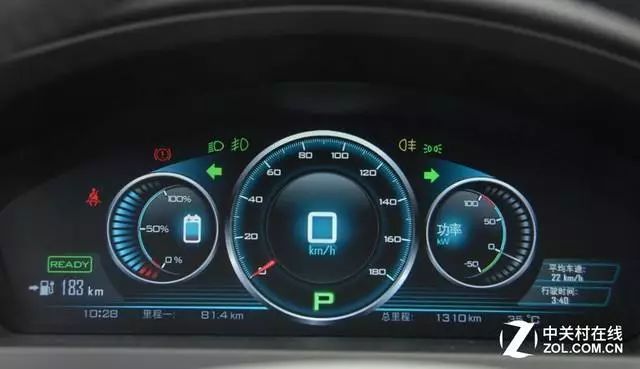
Since the car needs perfect backlighting under various ambient light conditions, the light sensor has become one of the most effective solutions for achieving more comfortable display quality with the human eye-like sensing function, which can satisfy the safety of the car. And comfort standards.
Mainstream ambient light sensor and its characteristics
The AMIS-74980x Ambient Light Sensor uses the company's proprietary CMOS image sensing technology to make it more flexible and economical for devices with illuminated displays. For mobile phones, PDAs, handheld displays, LCD monitors, portable DVD players, notebook computers, large LCD monitors and MP3 players, ambient light sensors are an economical and ideal solution. It is also ideal for in-car audio and video systems, GPS displays, headlights, rearview mirrors and instrument panels in automotive applications.

The AMIS-74980x is an analog/digital output device with excellent performance over a supply voltage range of 3.0 volts to 3.6 volts, an operating frequency of 10 to 100 kHz, and a temperature range of 0 °C to 70 °C. They work well under a variety of light sources, including natural light, fluorescent, traditional incandescent and halogen lamps. In addition, they also have an important feature that their dark current is very low, which allows the display controller to adjust the brightness of the display in low brightness environments. The sensors also offer a variety of output options, programming capabilities and low power consumption.
Similarly, OSRAM Opto Semiconductors Inc. has introduced the allegedly the first ambient light sensor for mobile products that accurately matches or simulates the human eye sensitivity curve, enabling mobile displays and brightness levels to be made even more For precise adjustments. The company developed the "human eye" feature for this sensor model ALS SFH5711 by replacing a traditional silicon material with a new material system. Logarithmic amplifier integrated circuits (ICs) enable them to detect larger illuminance ranges (from 3 lux to over 30,000 lux) with greater precision, and eliminate the need for various series resistors, resulting in smaller product designs. Higher precision.
The ALS SFH5711 is also an enhanced ChipLED version of the popular SFH3410 from OSRAM. It uses very small and robust surface mount technology (SMT) to save on the cost of consumer applications while providing excellent optical performance. The spectral sensitivity of ALS SFH5711 is 560 nanometers (nm), which mimics the most sensitive areas of the human eye. The V (lambda) characteristic of ALS represents the wavelength spectrum of the color seen by the human eye. By automatically simulating human eye features more quickly, ALS is suitable for adjusting the brightness of displays and components to create the most appropriate reading conditions in a constantly changing lighting environment.
With ultra-low voltage of 2.3~5V, the sensor is power efficient and suitable for natural light sensor applications, including cell phones, digital cameras, notebook computers, PDAs and handheld global positioning systems (GPS). They can also be used in automotive applications to control the switching of the headlights based on ambient light.
Avago Technologies recently announced the availability of two new ambient brightness sensor products in a chipLED package. APDS-9005 (6-pin) and APDS-9006 (reverse-mounted 4-pin) are analog current output ambient light sensor (ALPS) products in a miniaturized chipLED environmentally friendly lead-free package with a peak spectral response at 500 nm, supplied by ALPS. The visual intelligence function can effectively simulate the response range of the human eye by eliminating ultraviolet light and infrared light. The APDS-9005 supports 1.8V to 5.5V power supplies, and the APDS-9006 supports 2.4V to 5.5V. Both sensors can operate over the -40°C to +85°C temperature range. In addition, the device itself can be arranged more closely. Bring more stable reliability and high performance output performance.
The APDS-9005 and APDS-9006 ambient brightness sensors are designed to closely match the human eye's response to spectral changes, which can significantly reduce power consumption and extend battery life. These new sensors are suitable for mobile products and commercial LCD display backlight control applications. Backlight applications that consume large amounts of current, such as portable devices, notebook computers, lighting management, and automotive interiors. It can also be used to turn indoor and outdoor lights, street lights, electronic signs and signal lights on or off. These sensors perform equally well under natural light, fluorescent, traditional incandescent and halogen lamps.
Capella Microsystems said its Filtron range of ambient light sensors can effectively eliminate excessive backlighting in portable devices such as laptops, cell phones, DVD players, PDAs, MP3 players, iPods and GPS. To extend the battery life of these mobile products. These chips can detect the luminosity in the environment and adjust the brightness of the LCD to meet the needs of the human eye.
The CM3200HS (High Sensitivity), CM3200 and CM3000 photometric sensors in this series consist of optical filters, photodiodes, digital filters and 9-bit D/A converters (which produce an analog output that varies with ambient luminosity) composition. The CM3200HS operates from an ambient light range of 0.5Lux to 350Lux, while the CM3200 operates from an ambient light range of 10Lux to 10,000Lux. The CM3000 sets the threshold of the external comparator through an external resistor. It is this comparator that produces an on or off output signal that is directed to the desired ambient luminosity range. The power consumption of this series of photometric sensors is generally 80 microamperes, less than 1 nA in the off state, and the voltage range is 2.7 to 5.5V.
Ling Yao Technology said that the backlight consumes more battery power than any other function. The new CM3200HS, CM3200 and CM3000 can increase the battery life of laptops by up to 41% and mobile phone battery life by up to 100%. In addition to being used in portable electronics, the Filtron family of products can also be used to control the brightness of plasma and LCD TV screens and car dashboards.

Because these chips are close to the brightness requirements of the human eye, they can also reduce eye fatigue, and the built-in digital filter eliminates the flicker of fluorescent lights in the environment. The company claims that these chips are the best in the industry to simulate human eyes due to the proprietary Filtron optical filter technology. Filtron only detects wavelengths from 450 to 650 nm. In addition, this light filtering technique is said to be the first to be fabricated using a semiconductor process, eliminating the extra step of rotating the plastic filter over the photodiode.
These chips are fabricated using mixed-signal technology and contain approximately 7,000 transistors. The CM3200HS and CM3200 are available in a CMP package measuring 3 x 4 mm or in an OPLGA package measuring 1.8 x 2.35 x 1 mm. In CMP packages, both devices are priced at $0.60 in 1,000-batch quantities. The CM3000 is also available in both packages. When the batch size is 1,000, the price of the CMP package is $0.55.
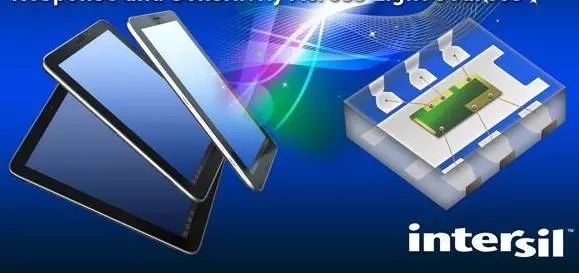
In addition, Vishay Intertechnology's ambient light sensors TEMT6200F, TEPT5700 and TEPT4400 are designed for advanced automotive functions that enable automatic brightness control of liquid crystal displays (LCDs) and support features that make car drivers comfortable and safe. The three devices from Vishay offer designers three package options: surface mount 0805 (TEMT6200F), leaded 5mm flat-top package (TEPT5700) or 3mm flat-top package (TEPT4400). In automotive applications, these sensors enable automatic headlight control and allow the tunnel sensor and display to be automatically adjusted to accommodate changes in ambient brightness. These sensors provide a simple two-pin connection that will be used to reduce power consumption in consumer electronics applications by controlling keyboard backlighting and to adjust the brightness of the LCD. In addition, these sensors are an environmentally friendly alternative to cadmium-based photoresistors.
Litecoin is an online currency based on peer-to-peer technology and is an open source software project under the MIT/X11 license. It can help users make instant payments to anyone in the world [2]. Litecoin was designed and programmed by a programmer (Li Qiwei) who used to work at Google, and launched on January 9, 2011. Litecoin is an improved digital currency inspired by Bitcoin. The technical principle of Litecoin is the same as that of Bitcoin. It also adopts a decentralized architecture, without any central authority control, and the issuance of new coins and the transfer of transactions and payments are based on open source encryption algorithms, etc. These are all imitated the design principle of Bitcoin. However, Litecoin tries its best to improve the shortcomings that Bitcoin has shown before, such as too slow transaction confirmation, small total cap, the emergence of large mining pools caused by proof-of-work mechanism and so on, SHA256 algorithm [1].
Litecoin, which aims to improve Bitcoin, has three significant differences. First, the Litecoin network can process a block every 2.5 minutes instead of 10, thus providing faster transaction confirmation. Second, the Litecoin network is expected to produce 84 million litecoins, four times the amount of money issued on the Bitcoin network. Each litecoin is divided into 100 million smaller units, defined by eight decimal places.
Litecoin Mining Machine:Bitmain Antminer L7,Goldshell Mini-DOGE Pro,Goldshell LT Lite,Innosilicon A4+ LTCMaster,Goldshell LT5,
Bitmain Antminer L3+ (504Mh),Bitmain Antminer L3+ (600Mh),etc.
Litecoin Mining Machine,L3 Miner,Antminer L7,Ltc Mining Machine,Scrypt
Shenzhen YLHM Technology Co., Ltd. , https://www.asicminer-ylhm.com